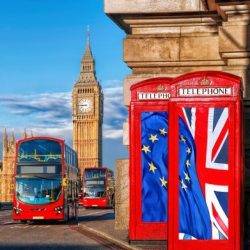February 14, 2017
Level of wellbeing higher for those who ‘wind-down’ into retirement 0
 New research into the effect of retirement on wellbeing commissioned by The What Works Centre for Wellbeing claims that those who gradually reduce their working time with more flexible hours improve their levels of wellbeing. The study looked at all existing research and found that part-time working towards the end of our careers improves life satisfaction. It advises that employers should support older workers to ‘wind-down’ into retirement with bridging jobs or reduce their working hours to avoid poor wellbeing, a new international study reveals. However, the research highlights that this depends on whether employees had control over when they retired, rather than being forced out through ill health or restructuring. If people take up bridging jobs because of financial strain, their wellbeing drops. Even after accounting for income and health, wellbeing is higher for those who have control over the timing or plan for their retirement, and voluntary retirees derive greater pleasure from free time in retirement. On the contrary, wellbeing is lower for those who are involuntarily retired, especially due to health reasons.
New research into the effect of retirement on wellbeing commissioned by The What Works Centre for Wellbeing claims that those who gradually reduce their working time with more flexible hours improve their levels of wellbeing. The study looked at all existing research and found that part-time working towards the end of our careers improves life satisfaction. It advises that employers should support older workers to ‘wind-down’ into retirement with bridging jobs or reduce their working hours to avoid poor wellbeing, a new international study reveals. However, the research highlights that this depends on whether employees had control over when they retired, rather than being forced out through ill health or restructuring. If people take up bridging jobs because of financial strain, their wellbeing drops. Even after accounting for income and health, wellbeing is higher for those who have control over the timing or plan for their retirement, and voluntary retirees derive greater pleasure from free time in retirement. On the contrary, wellbeing is lower for those who are involuntarily retired, especially due to health reasons.










 The more recent employment figures for London suggest that until the terms of Brexit are known and put in motion, the jobs market will remain cautious. This is according to the latest Morgan McKinley London Employment Monitor which found that despite an 81 percent increase in jobs available and an 83 percent increase in professionals seeking jobs; compared to a 115 percent increase in jobs this time last year, the 2017 spike was muted in comparison. The 83 percent increase in job seekers month-on-month is coupled with a 29 percent decrease, year-on-year. Contributing to the decrease is the trickling off of non-British EU nationals working in the City, who comprise up to 10 percent of its workforce. In a post-Brexit survey of professionals conducted by Morgan McKinley, these individuals reported either moving abroad, or considering leaving London because of Brexit.
The more recent employment figures for London suggest that until the terms of Brexit are known and put in motion, the jobs market will remain cautious. This is according to the latest Morgan McKinley London Employment Monitor which found that despite an 81 percent increase in jobs available and an 83 percent increase in professionals seeking jobs; compared to a 115 percent increase in jobs this time last year, the 2017 spike was muted in comparison. The 83 percent increase in job seekers month-on-month is coupled with a 29 percent decrease, year-on-year. Contributing to the decrease is the trickling off of non-British EU nationals working in the City, who comprise up to 10 percent of its workforce. In a post-Brexit survey of professionals conducted by Morgan McKinley, these individuals reported either moving abroad, or considering leaving London because of Brexit.


 With the UK facing at best, very slow growth, or even shrinkage, of the working population, future changes to migration levels into the UK due to Brexit could exacerbate the financial stresses and strains caused by the UK’s aging workforce. This is according to the
With the UK facing at best, very slow growth, or even shrinkage, of the working population, future changes to migration levels into the UK due to Brexit could exacerbate the financial stresses and strains caused by the UK’s aging workforce. This is according to the 


















February 13, 2017
Neuroscience can function as a management tool for personal development 0
by Mike James • Comment, Workplace
(more…)